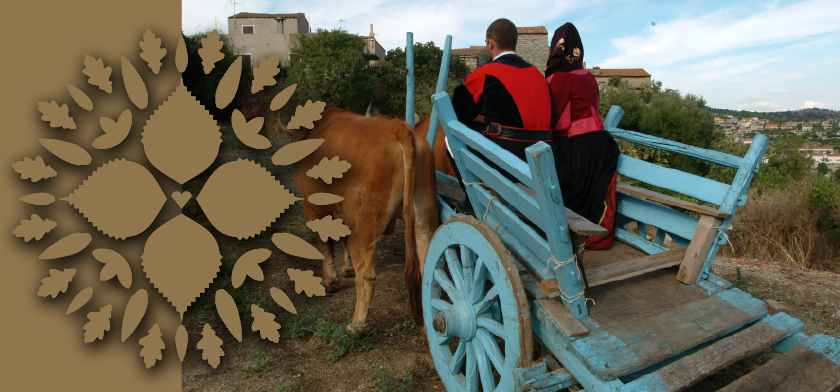The name of Orotelli could derive from the nouns of Greek origin "Oros" (high ground) and "Tello" (to be born), referring to its hilly position, or from the Latin "Ortellius", that is golden ground because it is rich in wheat. Certainly the village boasts ancient origins (some prehistoric monuments date back to the end of the Neolithic age or to the beginning of the Copper Age). Ancient evidences can also be found in the various monuments of the Nuragic era such as the numerous megalithic burials or the famous Sinne dolmen. The present town may have originated in Roman times, located along the route of an important road that the empire had built to connect the centers of Cagliari and Olbia. According to tradition the origins of the first inhabited nucleus are instead entrusted to an ancient legend of a shepherd and his lost cattle: the man, coming from a neighboring country, after a long search finds the animals still to drink at a fountain called Iscatthai (now district of Orotelli). The shepherd, fascinated by that source of water and the beauty of the places, decided not to go away from that area and move there with his family, thus giving birth to the country.
In the heart of Sardinia, where life is still marked by ancient traditions and folk customs, lies the center of Orotelli. The municipality is located about 18 km from Nuoro, in the historic sub-region of Barbagia, and borders the territories of Bono, Benetutti, Bottida, Illorai (in the province of Sassari) and Oniferi, Orani and Ottana in the same province of Nuoro. The center rises on a plateau characterized by small-sized granite rocks, in particular tonalites present above all in the Serra d'Orotelli, north of the town. The town is divided into two separate parts: the oldest, with the historic center around the church dedicated to San Giovanni Battista and the nearby church of San Lussorio, and since the 1930s, the new district of Mussinzua, where the rural church of the Holy Savior and the Holy Spirit Parish Church, patron of Orotelli, built starting from 1970 in modern style on the ruins of the old Aragonese church of the XIV century.
Despite the granitic territory, the country stood out more for its agricultural economy than for the traditional pastoral activity of the island. In the 1960s, with the crisis in the cereals sector, the farming community disappeared almost definitively. The craftsmanship continues, which, thanks to their art and skill, has led the Orotellian shoemakers to be known throughout the province. The town has always been considered the home of the classic Barbagia boots, sos cambales, still today hand-made according to tradition and using wooden forms, goat bone for finishing and lining, twine and trench cutters for the cuts of leather. Beyond the parish church of San Giovanni Battista, one of the most important religious buildings, built around 1116 and already the seat of an episcopal chair between 1116 and 1139, is the church of San Lussorio, built in granite ashlars and a short distance away. with adjoining bell tower always in granite. In the district of Mussinzua there is the rural church of the Santissimo Salvatore (now incorporated inside the cemetery), with a large presbytery divided from the central hall by a pointed arch in the Aragonese style. In the new district there is also the Parish Church Spirito. There are also numerous rural churches still accessible today such as the church of San Pietro di Oddini and the church of Nostra Signora di Sinne, dedicated to the Christian martyrs Ambiso and Ampilo. Finally, in the territory there are several archaeological remains dating back to the pre-Nuragic period and the Nuraghic period, such as the nuraghi Aeddos, Athentu, Calone, Corcove, Passarinu and Sarcanai. The tombs of the giants of Forolo and Sa turre ‘e su campanile are also worth mentioning. The Aeddos nuraghe, in particular, built with huge blocks of granite, has cyclopean dimensions and dates back to the Bronze Age and, despite the passing of millennia, has remained intact for all its original height.

